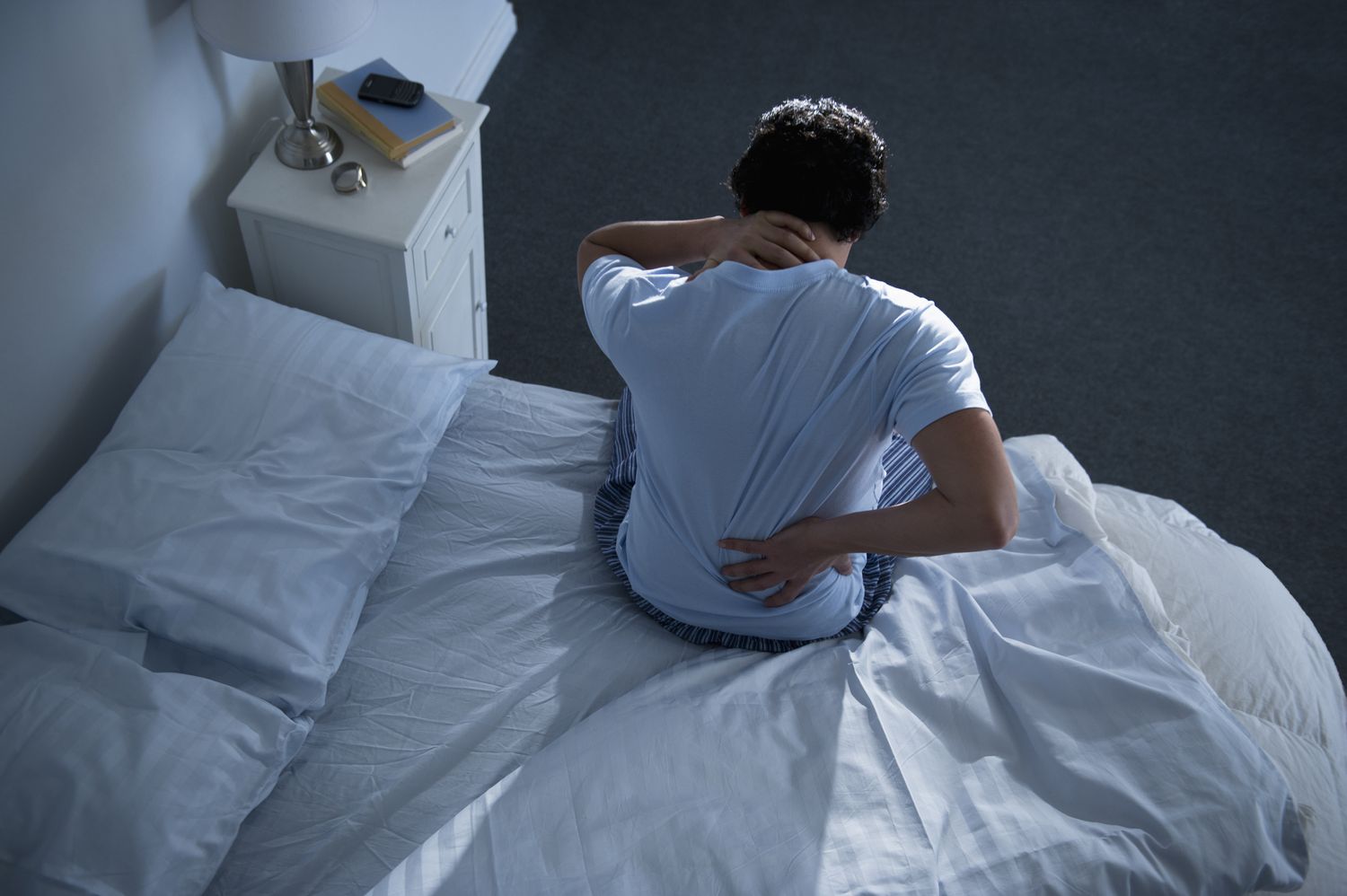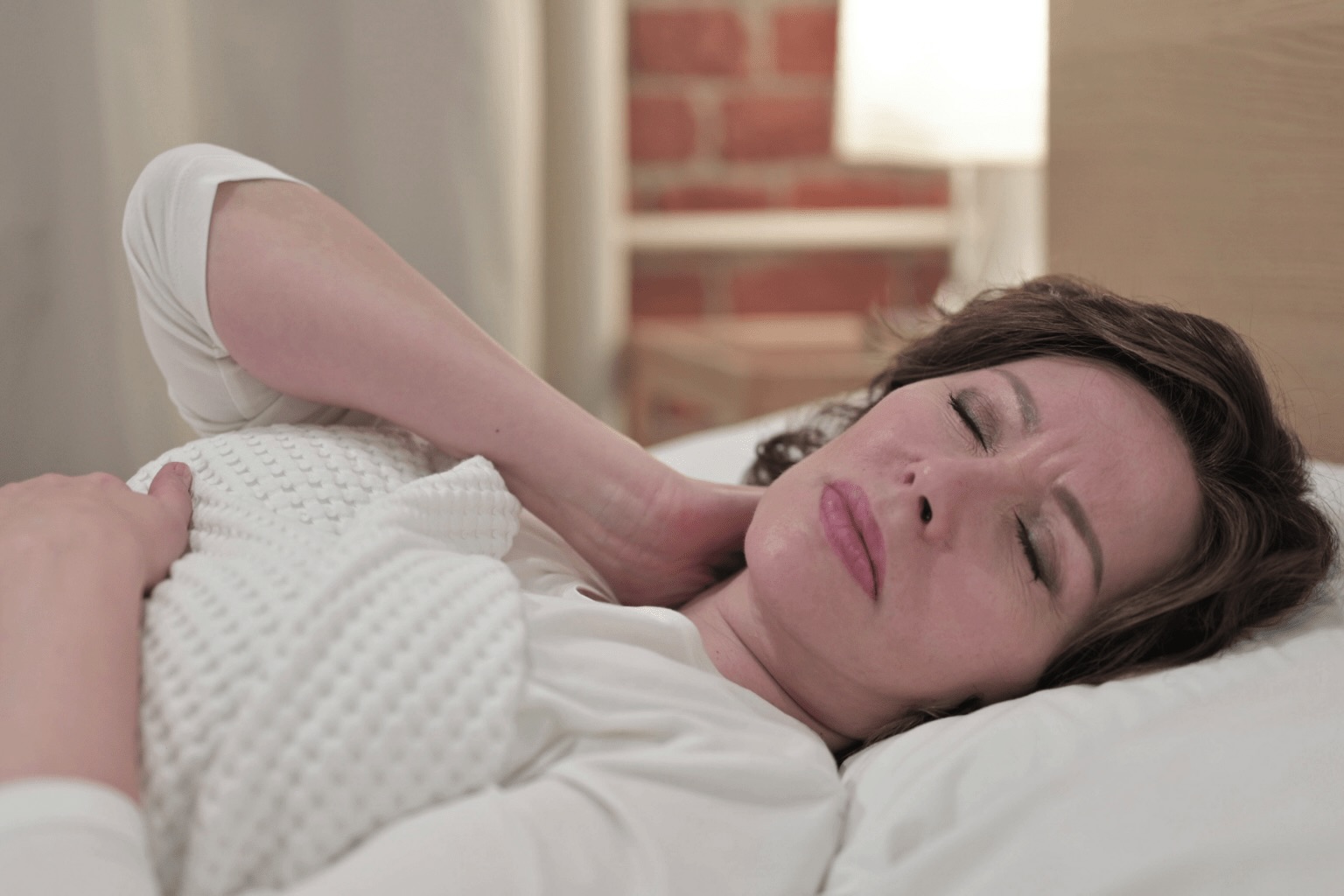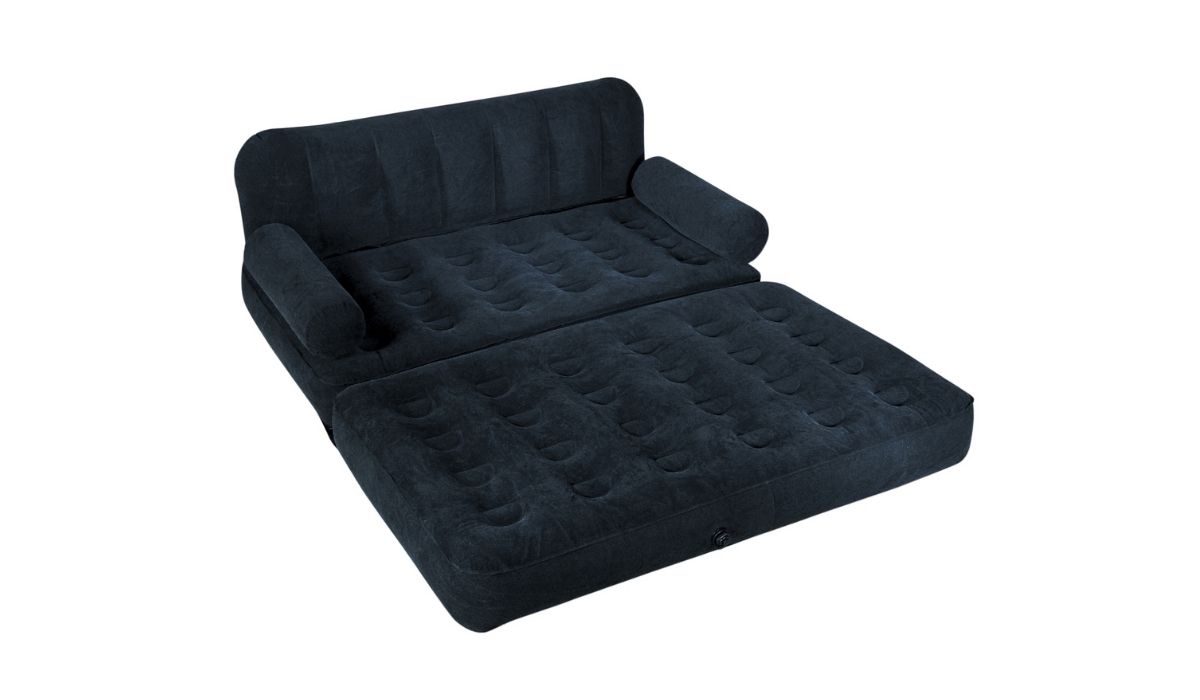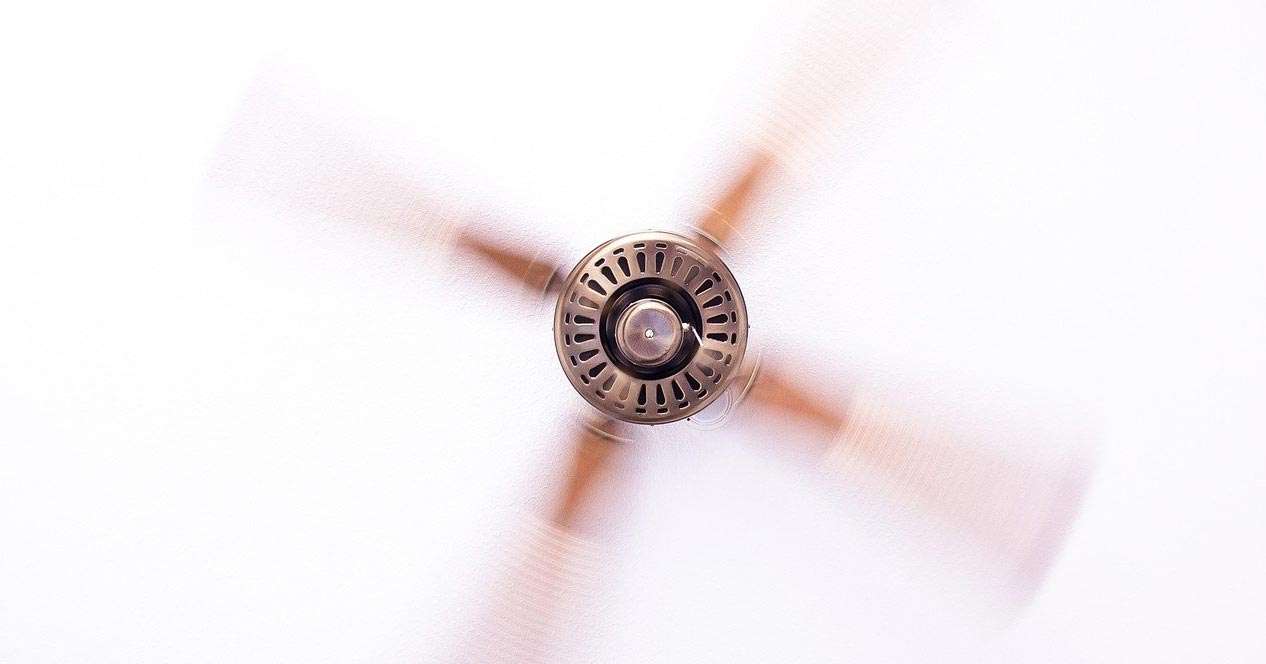Home>Furniture>Bedroom Furniture>Why Does My Mattress Make My Back Hurt


Bedroom Furniture
Why Does My Mattress Make My Back Hurt
Modified: February 25, 2024
Discover why your mattress may be causing back pain and find solutions to improve your sleep comfort with high-quality bedroom furniture.
(Many of the links in this article redirect to a specific reviewed product. Your purchase of these products through affiliate links helps to generate commission for Storables.com, at no extra cost. Learn more)
Introduction
When it comes to getting a good night’s sleep, few things are as important as a comfortable and supportive mattress. However, many people find themselves waking up with back pain, wondering why their mattress is causing them discomfort. If you’re one of those people, you’re not alone. Back pain is a common complaint, and it can be especially frustrating when it’s exacerbated by your mattress.
In this article, we will explore the relationship between mattresses and back pain. We will investigate the factors that can contribute to back pain from a mattress, discuss the types of mattresses that may cause discomfort, and provide tips for choosing the right mattress to alleviate back pain. Additionally, we will learn how to maintain a healthy sleeping position and discuss additional steps you can take to alleviate back pain.
Before diving into the details, it’s important to understand that there is no one-size-fits-all solution when it comes to mattresses and back pain. Our bodies are unique, and what works for one person may not work for another. It’s essential to listen to your body and find the mattress that works best for you.
So, if you’re tired of waking up with nagging back pain, let’s explore the fascinating world of mattresses and discover how we can get a more restful and pain-free night’s sleep.
Key Takeaways:
- The right mattress can alleviate back pain by providing proper support and alignment. Factors like firmness, material, and edge support play a crucial role in choosing the ideal mattress for individual needs.
- Maintaining a healthy sleeping position, engaging in regular exercise, and practicing stress reduction techniques are essential for alleviating back pain. Complementary therapies and a supportive workstation can also contribute to overall well-being.
Read more: Why Does My Mattress Hurt My Back
Understanding the Role of Mattresses in Causing Back Pain
Before we can address the issue of back pain caused by mattresses, it’s important to understand how mattresses can contribute to this discomfort. Our spine has a natural curvature, and when we lie down, our mattress should help maintain that alignment. However, if the mattress doesn’t provide adequate support, it can cause the spine to become misaligned, leading to muscle strain and tension in the back.
One common cause of back pain is a mattress that is too soft. While a soft mattress may feel comfortable at first, it can lack the necessary support to keep your spine properly aligned. As a result, your body may sink too deeply into the mattress, causing the spine to curve unnaturally. This can put excessive strain on the muscles and ligaments in the back, leading to pain and discomfort.
On the other hand, a mattress that is too firm can also contribute to back pain. A firm mattress may not contour to the curves of your body, causing pressure points to develop. This can lead to poor circulation and discomfort in the back and other areas.
Furthermore, an old or worn-out mattress can also be a culprit in causing back pain. Over time, the materials in a mattress can lose their ability to provide proper support. Springs can become worn, foam can deteriorate, and the overall structure can become compromised. Sleeping on such a mattress can lead to an unsupportive sleeping surface that aggravates back pain.
It’s important to note that different individuals may have different preferences when it comes to mattress firmness. Some people find relief with a softer mattress, while others prefer a firmer one. The key is to find a balance that provides adequate support while also offering comfort.
Now that we have a better understanding of how mattresses can contribute to back pain, let’s explore the specific factors that should be considered when selecting a mattress to prevent or alleviate discomfort in the back.
Factors That Can Contribute to Back Pain from a Mattress
When it comes to choosing a mattress that will help alleviate or prevent back pain, there are several important factors to consider. By understanding these factors, you can make an informed decision and select a mattress that suits your specific needs. Here are some key elements to keep in mind:
- Firmness: The firmness of a mattress is crucial in determining the amount of support it provides. As mentioned earlier, a mattress that is too soft can lead to spinal misalignment, while a mattress that is too firm can create pressure points. The ideal firmness level will vary from person to person, so it’s important to find a balance that keeps your spine aligned without causing discomfort.
- Support: A mattress should offer proper support to your body’s natural curves. Look for a mattress that helps maintain the alignment of your spine, especially in the lumbar region. This will help distribute your body weight evenly, reducing the risk of developing pain and discomfort in the back.
- Material: Different mattress materials can have varying effects on back pain. Memory foam mattresses, for example, tend to contour to your body shape, offering excellent support and pressure relief. Innerspring mattresses, on the other hand, provide more bounce and may be better suited for those who prefer a firmer feel. Latex mattresses can offer a combination of support and comfort. Consider your personal preferences and any specific needs you have when choosing a mattress material.
- Edge Support: Pay attention to the edge support of a mattress, especially if you tend to sleep near the edge. A mattress with solid edge support will prevent you from sinking or rolling off the bed during sleep, which can strain your back and cause discomfort.
- Motion Isolation: If you share your bed with a partner, it’s important to consider a mattress that offers good motion isolation. This feature helps absorb and minimize motion transfer, allowing you and your partner to move independently without disturbing each other. This can be beneficial for those with back pain, as it reduces the risk of sudden movements that can exacerbate discomfort.
- Temperature Regulation: Some mattresses are designed with cooling properties, which can be beneficial if you tend to sleep hot. Excessive heat and sweating during sleep can cause discomfort and disrupt the quality of your rest. Look for mattresses that have breathable materials or cooling technologies to help regulate your body temperature and create a more comfortable sleeping environment.
By considering these factors, you can narrow down your options and find a mattress that is better suited to your needs, helping to alleviate or prevent back pain.
Types of Mattresses That May Cause Back Pain
While mattresses can play a significant role in relieving back pain, it’s important to note that certain types of mattresses may exacerbate or even cause back discomfort. Understanding the characteristics of these mattresses can help you make an informed decision and avoid potential issues. Here are some types of mattresses that may contribute to back pain:
- Old or Worn-Out Mattresses: When a mattress starts to sag or lose its structural integrity, it can no longer provide adequate support to your body. This lack of support can lead to spinal misalignment and increased pressure on certain areas of the back. If your mattress is over eight years old or showing signs of wear, it may be time to consider a replacement.
- Very Soft Mattresses: While some people find comfort in softer mattresses, an excessively soft mattress can lead to spinal misalignment. When your body sinks too deeply into the mattress, it can cause your spine to curve unnaturally, leading to muscle strain and back pain. If you prefer a softer feel, opt for a mattress that still provides adequate support and maintains spinal alignment.
- Very Firm Mattresses: On the other end of the spectrum, mattresses that are too firm may lack the necessary contouring and cushioning. Without enough give, these mattresses can create pressure points and prevent proper alignment of the spine. It’s important to strike a balance between firmness and support to ensure optimal comfort and pain relief.
- Improperly Sized Mattresses: Using a mattress that is either too small or too big for your bed frame can result in an uneven sleeping surface. This can cause your body to rest in unnatural positions, straining your back muscles and leading to discomfort. Ensure that your mattress fits your bed frame properly to maintain proper alignment.
- Low-Quality or Cheap Mattresses: While affordability is important, skimping on quality when it comes to mattresses can have consequences. Low-quality mattresses often lack the necessary support and durability to provide long-term comfort. Investing in a higher-quality mattress can significantly reduce the risk of back pain and ensure better overall sleep.
- Non-Supportive Spring Mattresses: Traditional innerspring mattresses that have insufficient coil support can contribute to back pain. These mattresses may lack the necessary conformability, leading to poor spinal alignment and increased pressure on specific areas of the back. Look for innerspring mattresses with more robust coil systems or consider other mattress options that offer better support.
It’s important to remember that individual preferences and body types vary, and what may cause back pain for one person might not affect another in the same way. Experimenting with different mattress types and seeking professional guidance can help you find the most suitable mattress that promotes a comfortable and pain-free sleep.
Ensure your mattress provides proper support for your back. Look for a medium-firm mattress to maintain natural spine alignment and reduce back pain.
Choosing the Right Mattress for Back Pain Relief
Now that we understand the factors that can contribute to back pain from a mattress and the types of mattresses that may cause discomfort, let’s explore how to choose the right mattress for back pain relief. Keep the following tips in mind when making your selection:
- Try Before You Buy: Don’t be afraid to spend some time lying down on a mattress before making a purchase decision. This will give you a better sense of its firmness, support, and overall comfort. Many mattress stores offer trial periods, allowing you to test the mattress in your home for an extended time frame.
- Consider Your Sleeping Position: Your preferred sleeping position can influence the type of mattress that will suit you best.
- If you sleep on your back, look for a mattress that provides adequate lumbar support and helps maintain the natural curve of your spine.
- If you sleep on your side, a slightly softer mattress can help relieve pressure on your shoulders and hips.
- If you sleep on your stomach, a firmer mattress can help prevent excessive sinking of your midsection and keep your spine aligned.
- Seek Proper Support: A mattress that offers proper support is crucial in alleviating or preventing back pain. Look for a mattress that contours to your body’s shape, provides support to the natural curves of your spine, and helps distribute your body weight evenly.
- Consider Your Weight: Your body weight can affect the level of support and comfort you need from a mattress. Heavier individuals may require a firmer mattress to prevent excessive sinking, while lighter individuals may find more comfort in a softer mattress. Take your weight into consideration when choosing the right level of firmness.
- Consult with a Healthcare Professional: If you have chronic back pain or specific medical conditions related to your spine, it’s important to consult with a healthcare professional, such as a chiropractor or orthopedic doctor. They can provide guidance on the type of mattress that will best support your specific needs.
- Read Customer Reviews: Before making a final decision, take the time to read customer reviews and experiences with the mattress you’re considering. This can provide valuable insights into the mattress’s performance, durability, and ability to alleviate back pain.
- Consider Adjustable Bed Bases: If your budget allows, consider pairing your mattress with an adjustable bed base. These bases allow you to change the position of your mattress, providing additional support and allowing you to find the most comfortable sleeping position for your back.
Remember that finding the right mattress for back pain relief may require some trial and error. Everyone’s preferences and needs are unique, so take your time and be patient during the selection process. By considering your sleeping position, seeking proper support, and taking advantage of trial periods or return policies, you can increase your chances of finding the perfect mattress to alleviate your back pain.
Read more: Why Does My Recliner Hurt My Back
Tips for Maintaining a Healthy Sleeping Position
While choosing the right mattress is essential for back pain relief, maintaining a healthy sleeping position is equally important. Here are some tips to help you maintain proper alignment and reduce strain on your back while you sleep:
- Sleep on Your Back or Side: Sleeping on your back or side is generally considered the best positions for spinal alignment. When sleeping on your back, place a pillow under your knees to help maintain the natural curvature of your spine. If you’re a side sleeper, use a thicker pillow to support your neck and keep your spine straight.
- Avoid Sleeping on Your Stomach: Sleeping on your stomach can put strain on your neck and lower back as it tends to flatten the natural curve of your spine. If you find it difficult to break this habit, try using a flatter pillow or sleeping without a pillow to reduce strain on your neck.
- Use Supportive Pillows: Invest in high-quality pillows that provide proper support for your neck and head. Look for pillows that are adjustable, so you can customize their height and firmness to fit your sleeping position and personal preference. This will promote proper spinal alignment and reduce the risk of waking up with neck or back pain.
- Support Your Hips and Shoulders: Place a pillow between your knees if you sleep on your side to keep your hips properly aligned. If you sleep on your back, you can also place a small pillow or rolled-up towel under your lower back to provide extra support. This can help relieve pressure on your lower back and prevent discomfort.
- Avoid Twisting or Bending Your Spine: As you sleep, be mindful of any twisting or bending movements that can strain your back. Keep your body aligned and avoid positions that excessively arch or curve your spine. If you tend to toss and turn throughout the night, consider using a body pillow to help maintain proper alignment.
- Maintain a Comfortable Room Temperature: The temperature of your sleeping environment can also affect your sleep quality and comfort. Keep the room cool and well-ventilated to prevent excessive sweating and discomfort while you sleep. Use breathable bedding materials that promote airflow to help regulate your body temperature.
- Practice Relaxation Techniques: If you struggle with tension or stress that can manifest as muscle tightness in your back, incorporate relaxation techniques into your bedtime routine. This can include deep breathing exercises, meditation, gentle stretching, or taking a warm bath before bed. Relaxing your body and mind can help reduce muscle tension and promote a more restful sleep.
By adopting these tips, you can maintain a healthier sleeping position and reduce the risk of developing or exacerbating back pain. Remember, it’s important to combine proper sleeping habits with a supportive mattress to achieve optimal comfort and pain relief.
Additional Steps for Alleviating Back Pain
While choosing the right mattress and maintaining a healthy sleeping position are crucial for relieving back pain, there are additional steps you can take to further alleviate discomfort and improve your overall well-being. Consider incorporating these practices into your daily routine:
- Engage in Regular Exercise: Physical activity can help strengthen the muscles in your back and improve flexibility, reducing the risk of pain and injury. Incorporate exercises that target your core muscles, such as Pilates or yoga, as well as aerobic activities like walking or swimming. Consult with a healthcare professional to determine the most suitable exercises for your condition.
- Practice Good Posture: Maintaining good posture throughout the day is essential for supporting a healthy back. Whether you’re sitting, standing, or lifting objects, be mindful of your posture and make adjustments to keep your spine in a neutral position. Avoid slouching or hunching over, as this can place strain on your back muscles.
- Take Breaks from Prolonged Sitting: If you have a sedentary job that requires long hours of sitting, make it a habit to take regular breaks and move around. Sitting for extended periods can put added stress on your back. Stand up, stretch, and take short walks to relieve tension and promote better circulation.
- Apply Heat or Cold Therapy: Alternating between heat and cold therapy can help alleviate back pain. Apply a heating pad or take a warm bath to relax tight muscles and increase blood flow. On the other hand, you can use an ice pack or a bag of frozen vegetables wrapped in a towel to reduce inflammation and numb pain.
- Practice Mindfulness and Stress Reduction: Chronic stress and tension can contribute to back pain. Engage in activities that promote relaxation and stress reduction, such as meditation, deep breathing exercises, or practicing mindfulness. These practices can help relax your mind and body, reducing muscle tension and alleviating pain.
- Consider Complementary Therapies: Some individuals find relief from back pain through complementary therapies such as chiropractic adjustments, massage therapy, acupuncture, or physical therapy. These treatments can help address the underlying factors contributing to your back pain and provide targeted relief.
- Ensure a Supportive Workstation: If you spend a significant amount of time working at a desk, set up an ergonomic workstation that promotes proper posture and reduces strain on your back. Use an adjustable chair that provides adequate lumbar support, position your computer monitor at eye level, and use a keyboard and mouse that allow your arms to be at a comfortable angle.
- Get Sufficient Sleep: In addition to a supportive mattress, getting enough sleep is essential for overall health and pain management. Aim for 7-9 hours of quality sleep each night to allow your body time to heal and rejuvenate. Establish a consistent sleep schedule and create a relaxing bedtime routine to improve your sleep quality.
Remember, it’s important to consult with a healthcare professional if your back pain persists or worsens despite these measures. They can provide guidance tailored to your specific needs and suggest further treatment options if necessary.
Conclusion
Back pain can be a persistent and frustrating condition, but by understanding the role that mattresses play in causing or alleviating this discomfort, you can take steps to improve your sleep quality and overall well-being. Choosing the right mattress is essential, considering factors such as firmness, support, material, and edge support. Find the balance that provides optimal support and comfort for your unique needs.
In addition to selecting the right mattress, maintaining a healthy sleeping position is crucial for preventing and reducing back pain. Whether you sleep on your back or side, use supportive pillows and ensure proper alignment of your spine and hips. Avoid sleeping on your stomach, as it can strain your neck and lower back.
Implementing additional measures in your daily life can further alleviate back pain. Engage in regular exercise to strengthen your back muscles and improve flexibility. Practice good posture, take breaks from prolonged sitting, and apply heat or cold therapy when needed. Reduce stress through mindfulness techniques and consider complementary therapies that can provide targeted relief.
Remember, finding the right solution for your back pain may require some trial and error. It’s essential to listen to your body and seek professional guidance if needed. By making informed choices, creating a supportive sleep environment, and adopting healthy habits, you can significantly reduce back pain and enjoy a better quality of life.
Here’s to a restful and pain-free night’s sleep!
Frequently Asked Questions about Why Does My Mattress Make My Back Hurt
Was this page helpful?
At Storables.com, we guarantee accurate and reliable information. Our content, validated by Expert Board Contributors, is crafted following stringent Editorial Policies. We're committed to providing you with well-researched, expert-backed insights for all your informational needs.














